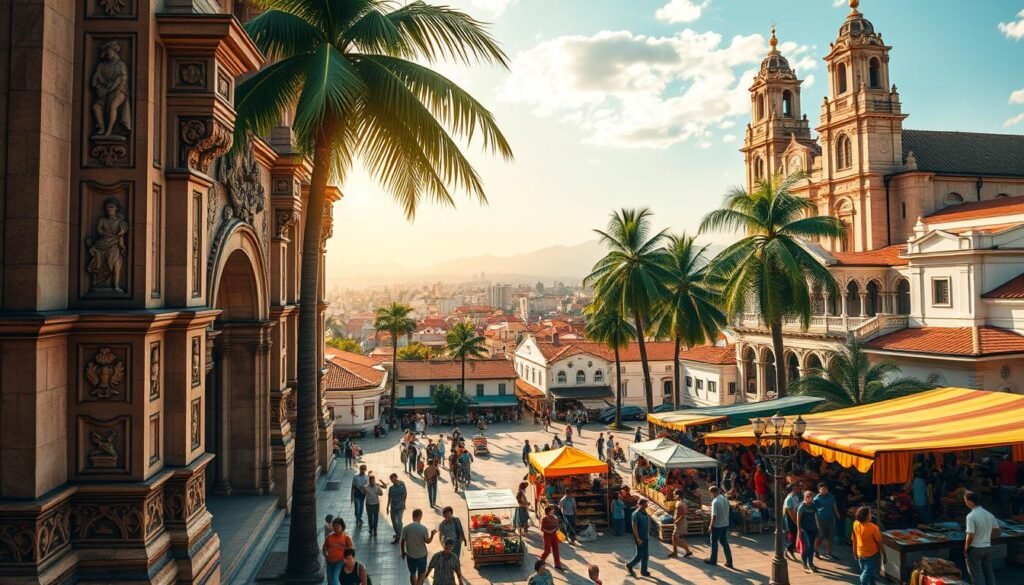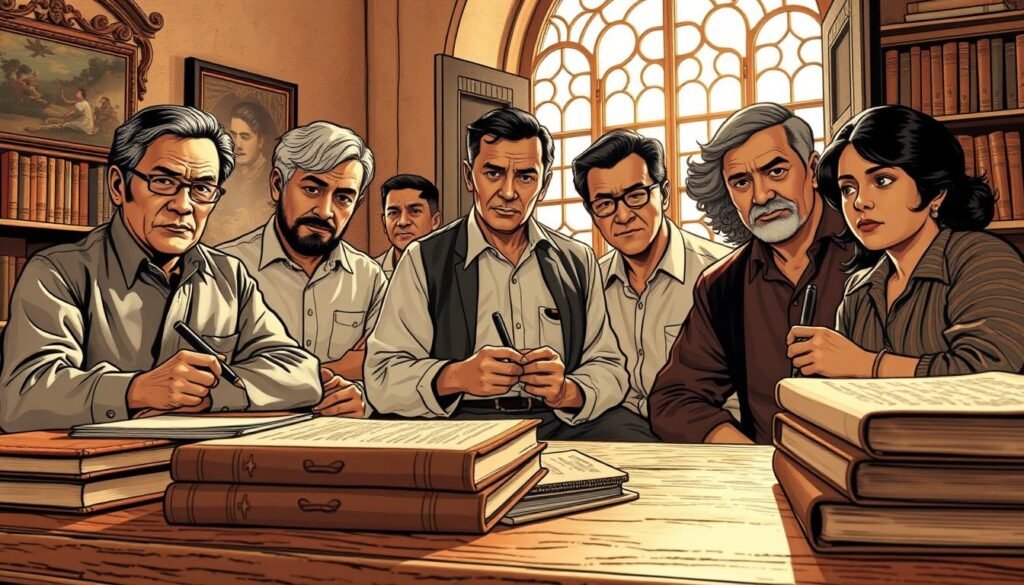Did you know that the first daily newspaper in the Philippines, La Esperanza, was published in 1846? This marked the beginning of a literary and journalistic revolution during the Spanish colonial period. The Philippines saw a surge in written expression, driven by the need to voice national identity and resistance against colonial rule.
During this era, influential figures like Jose Rizal emerged, using their works to inspire change. Rizal’s novels, Noli Me Tangere and El Filibusterismo, became catalysts for the Philippine Revolution. These stories not only entertained but also educated and mobilized the masses.
The Spanish era laid the foundation for modern journalism and literature in the Philippines. Publications like La Solidaridad became platforms for advocating reform. This period also saw the rise of women writers, who contributed significantly to the literary landscape.
This article explores the historical context, key figures, and the evolution of literary expression during this transformative time. Discover how the Spanish era shaped the future of storytelling and journalism in the Philippines.
Key Takeaways
- The first daily newspaper in the Philippines was published in 1846.
- Jose Rizal’s novels inspired the Philippine Revolution.
- The Spanish era laid the foundation for modern journalism.
- Women writers played a significant role in shaping literature.
- Publications like La Solidaridad advocated for reform.
Cultural Foundations in the Spanish Colonial Era
The Spanish colonial era brought profound changes to the Philippines, shaping its cultural and literary identity. This period was marked by political upheavals, colonial policies, and a blending of European and native traditions. These factors laid the groundwork for a unique artistic and literary landscape.
Historical and Political Context
Spanish colonization introduced a new socio-political structure to the Philippines. The encomienda system, though later abandoned, initially defined land ownership and labor. This system, along with the Catholic Church’s influence, shaped the cultural and social fabric of the country.
Violent wars and political changes during this era deeply impacted art and literature. Writers like Francisco Baltazar and José Rizal used their works to critique colonial rule and inspire national identity. Their stories became powerful tools for social commentary and resistance.

Cultural Influences on Philippine Literature
Spanish governance brought European literary traditions to the Philippines. These traditions blended with native storytelling, creating a rich literary heritage. The introduction of the Spanish language also influenced the mediums through which stories were told.
Publications like La Solidaridad became platforms for advocating reform. Journalism emerged as a vital tool for expressing dissent and mobilizing the masses. This period also saw the rise of women writers, who contributed significantly to the literary landscape.
The interplay between colonial influence and local creativity led to innovative expressions. Writers like Claro M. Recto continued to produce works in Spanish, preserving this literary tradition. For more insights into this transformative era, explore this detailed analysis.
Spotlight on Filipino Writers: Pioneers and Trailblazers
The Spanish era gave rise to a generation of literary pioneers who reshaped the Philippines’ cultural identity. These writers used their works to challenge colonial narratives and inspire national pride. Their contributions laid the foundation for modern storytelling and journalism in the country.

Notable Figures and Their Literary Contributions
Jose Rizal remains one of the most influential figures in Philippine literature. His novels, Noli Me Tangere and El Filibusterismo, exposed the injustices of Spanish rule and ignited a spirit of revolution. Another key figure, Francisco Baltazar, is celebrated for his epic poem Florante at Laura, which blended European and native storytelling traditions.
Modern writers like F. Sionil Jose and Nick Joaquin continued this legacy. Sionil Jose’s Rosales Saga explores the complexities of Philippine society, while Joaquin’s works, such as The Woman Who Had Two Navels, delve into the nation’s cultural and historical identity.
Breaking Barriers: Women and Men in Philippine Literature
Women writers played a pivotal role in shaping the literary landscape. Estrella Alfon, known for her short stories, captured the struggles of everyday life. Her collection, Magnificence and Other Stories, remains a cornerstone of Philippine literature.
Merlinda Bobis, a contemporary poet and novelist, has gained international acclaim for works like Fish-Hair Woman. Her stories often explore themes of migration and identity, resonating with readers worldwide.
Stories That Shaped a Nation
The diversity of Philippine literature is evident in its range of styles and themes. From the poetic works of Luis Francia to the journalistic essays of Jose Dalisay Jr., each writer has contributed uniquely to the nation’s literary heritage.
Manila, as a cultural hub, has been central to this literary evolution. Writers like Jessica Hagedorn have drawn inspiration from the city’s vibrant energy, crafting stories that reflect its dynamic character.
| Writer | Key Works | Contribution |
|---|---|---|
| Jose Rizal | Noli Me Tangere, El Filibusterismo | Catalyst for the Philippine Revolution |
| Estrella Alfon | Magnificence and Other Stories | Pioneer of Philippine short stories |
| F. Sionil Jose | Rosales Saga | Exploration of societal complexities |
| Merlinda Bobis | Fish-Hair Woman | International acclaim for migration themes |
For more insights into the bravery and contributions of Filipino women, explore this detailed analysis.
Legacy and Impact on Philippine Literature and Journalism
The Spanish colonial period left an indelible mark on Philippine literature and journalism, shaping its evolution into the modern era. The fusion of European and native traditions created a unique foundation for storytelling and reporting that continues to influence contemporary practices.

Lasting Contributions from the Spanish Era to Modern Times
Early literary works like Jose Rizal’s Noli Me Tangere and El Filibusterismo set the stage for narratives focused on social justice and cultural identity. These themes remain central in modern works, reflecting the enduring relevance of colonial-era critiques.
The blending of Spanish and indigenous storytelling traditions led to innovative literary expressions. This fusion is evident in the works of contemporary writers like F. Sionil Jose, whose Rosales Saga explores societal complexities. Similarly, Nick Joaquin’s writings delve into the nation’s historical and cultural identity, as highlighted in this detailed analysis.
Journalism, too, has been shaped by this legacy. Early publications like La Solidaridad served as platforms for reform, a tradition that continues in modern investigative reporting. The emphasis on truth and advocacy remains a cornerstone of Philippine journalism.
Ongoing Academic Research and Categorization
Academic efforts to catalog and study Philippine literature have preserved its rich heritage. Writers are often categorized by language, region, and awards, ensuring their contributions are recognized and studied. For example, the works of Bienvenido Lumbera, a National Artist for Literature, are celebrated for their critical insights into Filipino identity.
Contemporary writers like Merlinda Bobis and Jessica Hagedorn continue to draw inspiration from this heritage. Their works, often exploring themes of migration and identity, resonate with global audiences while staying rooted in Filipino traditions.
| Writer | Key Works | Contribution |
|---|---|---|
| Jose Rizal | Noli Me Tangere, El Filibusterismo | Catalyst for social reform |
| F. Sionil Jose | Rosales Saga | Exploration of societal issues |
| Nick Joaquin | The Woman Who Had Two Navels | Cultural and historical narratives |
| Merlinda Bobis | Fish-Hair Woman | Themes of migration and identity |
The Spanish era’s influence on Philippine literature and journalism is undeniable. From Rizal’s revolutionary works to modern narratives, this legacy continues to inspire and shape the nation’s cultural identity. For more insights into this transformative period, explore this detailed analysis.
Conclusion
The legacy of the Spanish era continues to shape the literary and journalistic landscape of the Philippines today. From the pioneering works of Jose Rizal to the modern narratives of contemporary writers, the blend of colonial and indigenous influences has created a rich cultural heritage.
Early socio-political challenges inspired a generation of Filipino voices to critique and resist through their work. Figures like Francisco Baltazar and Estrella Alfon broke barriers, paving the way for future generations. Their contributions remain a cornerstone of the nation’s identity.
Preserving this legacy through curated lists and academic research ensures that these stories endure. The interplay between past influences and contemporary innovation continues to inspire new narratives, keeping the spirit of Filipino literature alive.
For more insights into this transformative period, explore this detailed analysis.
FAQ
Who were some prominent figures in Philippine literature during the Spanish colonial era?
Writers like Francisco Balagtas and José Rizal emerged as key figures. Balagtas is celebrated for his epic poem “Florante at Laura,” while Rizal’s novels, such as “Noli Me Tangere,” sparked national consciousness.
How did Spanish colonization influence Philippine literature?
Spanish rule introduced new forms of writing, including religious texts and poetry. It also blended local traditions with European styles, creating a unique literary identity.
What role did women play in shaping Philippine literature during this period?
Women like Leona Florentino became pioneers in poetry, challenging societal norms and contributing to the cultural landscape despite limited opportunities.
What themes were common in literature from the Spanish era?
Works often explored themes of love, faith, and resistance. Many writers used their craft to critique colonial oppression and advocate for social change.
How did literature from this era impact modern Philippine writing?
The works of Spanish-era writers laid the foundation for contemporary literature, inspiring future generations to explore identity, history, and national pride in their storytelling.
Source Links
- Philippine literature
- Writers, journalists as freedom heroes
- Philippine literature in Spanish
- Philippines – Spanish Colonization, Culture, Trade | Britannica
- The Spanish Influence on Filipino Culture and Language
- #FilipinaTrailblazers: Raymunda Blum, Pioneering Overseas Filipino Worker (OFW)
- Celebrate Women’s Month with literary masterpieces by women – adobo Magazine
- Trailblazing Cebuana writers
- The Literary Forms in Philippine Literature – National Commission for Culture and the Arts
- A writer’s truth: The legacy of National Artist Bienvenido Lumbera – University of the Philippines
- The Filipino Author as Producer
- The Intersection of Filipino Writers and AI: A Tense Tango of Awe and Alarm
- Re-envisioning the Tropics: Nick Joaquin’s Philippine Gothic

